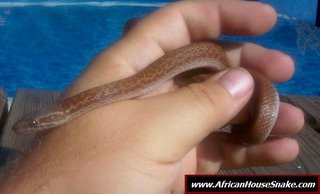New House Snake Blog and Website
I have finally found the time to set up my website that will both provide information about the African House Snake and other African Colubrids and be my outlet for selling my captive bred animals.
I have set up a new house snake blog on that site as well and I will post all new information and articles to the new blog.
I am leaving this existing blog up for informational purposes but will not be posting any new content to it.
Here is the location of the new African House Snake Website
and
Here is the location of the new House Snake Blog
You may note that I am now providing a very in depth care sheet and a free copy of "The Reptile Book" by Raymond L. Ditmars on the new site to people that join my email list. If you are already on the list I will be doing a broadcast email to you today to let you know how to get your copies with out rejoining a second time so if you are already on the list you will get that email in just a bit.
I have been asked why one must be on my email list to get a copy of this care sheet and my answer is two fold.
1. I want you on my email list! In return I provide valuable information but the only way I will ever have a thriving breeding business is to build up a list of Reptile Enthusiasts. I don't "hard sell" anything here and never will but I do let people know when animals are available both from myself and other sources.
2. And more important for you, the care sheet is NOT a static document. In fact there are some nasty typos on it as I had to rush it into print. Beyond that though I am learning more about the care, breeding and species ID of Lamprophis every single day. The care sheet will be updated at least once a month. By being on my email list you will always have access to the most current version.
I hope the new site and new blog are helpful to everyone. I have already put up a great resource for House Snake Species Identification on the site, so you may want to check that out. In time I will develop full pages for each species.
The house snake world is more exciting every day, I will be acquiring some Het Amel Maculatus later next year. I have L. inortus and more Amel L. capensis on the way.
Stay tuned and enjoy the new site and blog.







